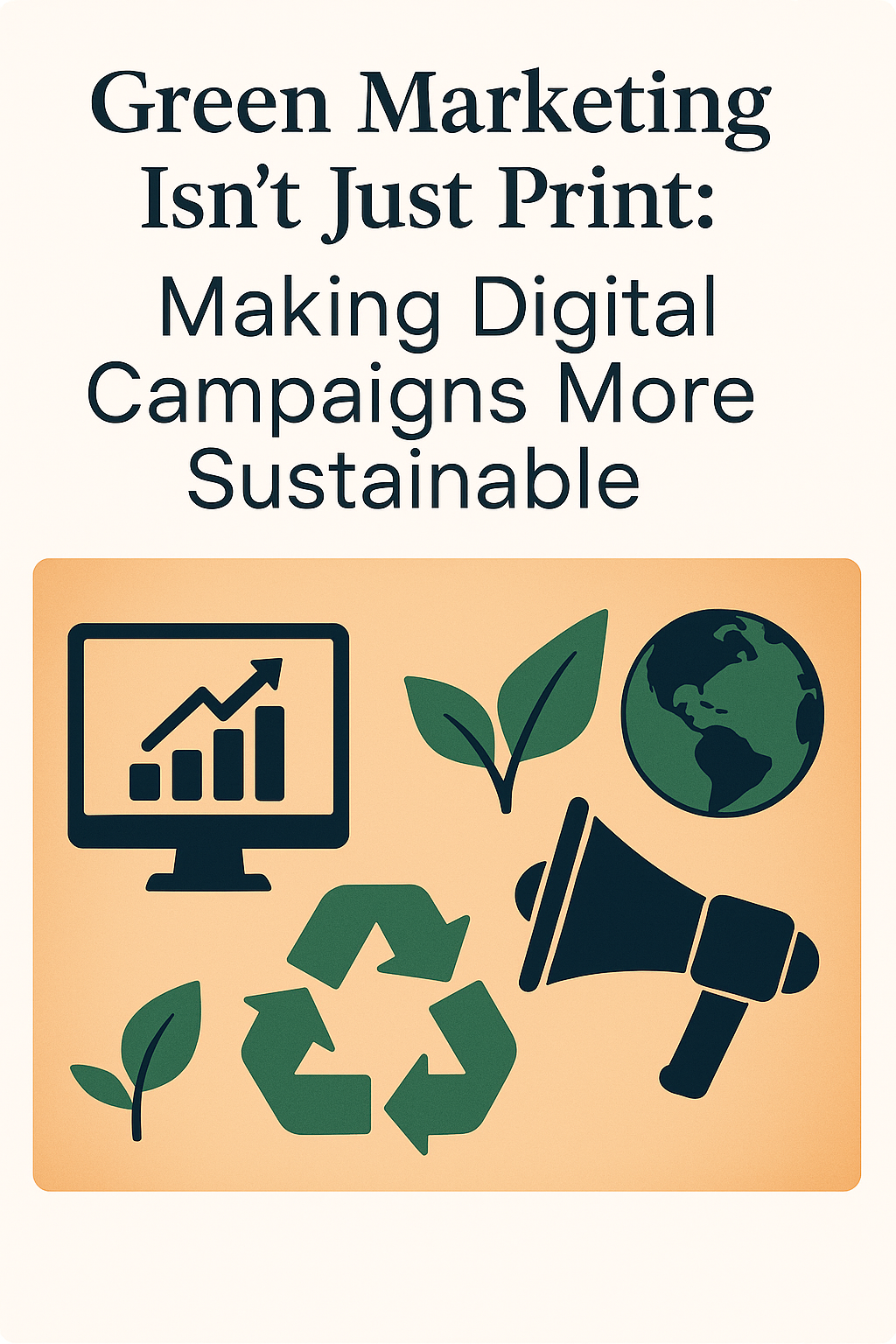In the past, green marketing was often associated with reducing paper usage, switching to recycled print materials, or simply avoiding direct mail. But in today’s digital-first world, sustainability doesn’t stop at print — it extends deeply into our digital marketing practices too.
As marketers, we often talk about clicks, conversions, and content, but rarely about carbon footprints, data energy consumption, or digital waste. The reality is, every email sent, ad displayed, and video streamed contributes to energy use and environmental impact.
So how can you make your digital campaigns greener — and more ethical — while staying effective?
🌍 1. Understand the Environmental Cost of Digital Marketing
Digital doesn’t mean impact-free. Consider this:
- The average email emits 4g of CO₂.
- Streaming video for an hour can emit up to 400g of CO₂.
- Data centers powering websites and platforms consume huge amounts of electricity, often from non-renewable sources.
When scaled across millions of impressions and campaigns, the environmental footprint of digital activity becomes significant.
✅ 2. Optimize for Efficiency
One of the best ways to reduce the environmental impact of your campaigns is to improve their efficiency:
- Target smarter: Use refined segmentation to reduce unnecessary ad impressions.
- Compress images and videos: Lower file sizes reduce bandwidth and energy use.
- Avoid “spray and pray” emails: Only send campaigns to engaged and relevant audiences.
- Use lightweight code and fast-loading designs to reduce energy-intensive page loads.
🔁 3. Embrace Low-Carbon Channels
Some digital channels consume more energy than others. Consider:
- Email over video ads (if the message can be equally effective).
- Text-based content or static visuals over autoplay video or animation.
- Organic SEO content and micro-targeted PPC over broad, high-volume campaigns.
The goal? Do more with less — and only serve what truly serves your user.
🌿 4. Choose Greener Tools and Platforms
Many tools now offer more eco-conscious options:
- Web hosting on green servers (powered by renewable energy).
- Sustainable analytics tools that minimize tracking code and server loads.
- Platforms like Mailchimp or MailerLite that support responsible list management and unsubscribes.
When selecting vendors, ask about their environmental commitments and energy sources.
🌟 5. Communicate Your Values — Genuinely
Today’s consumers care. If your brand prioritizes sustainability, show it clearly in your messaging — but avoid greenwashing. Instead:
- Share your digital sustainability efforts transparently.
- Highlight measurable actions (e.g., “We’ve reduced campaign file sizes by 40% this year”).
- Invite your audience to engage with greener alternatives or low-impact options.
🚀 Conclusion: Sustainability Is a Strategy
Going green in digital marketing isn’t just about ethics — it’s also about performance. Efficient, focused campaigns are more cost-effective, user-friendly, and sustainable. And as more consumers prioritize sustainability, brands that reflect those values will gain trust and loyalty.
Green marketing today means more than recycled paper. It’s about rethinking the entire journey — from design to delivery — for a cleaner, more conscious digital future.


Leave a Reply